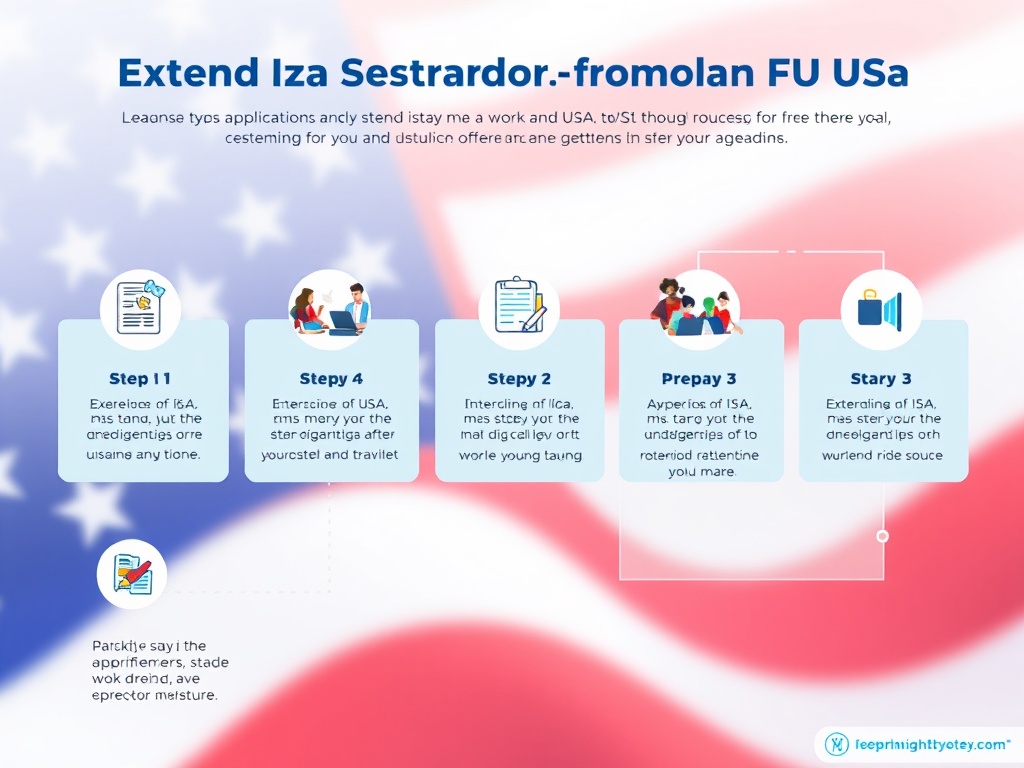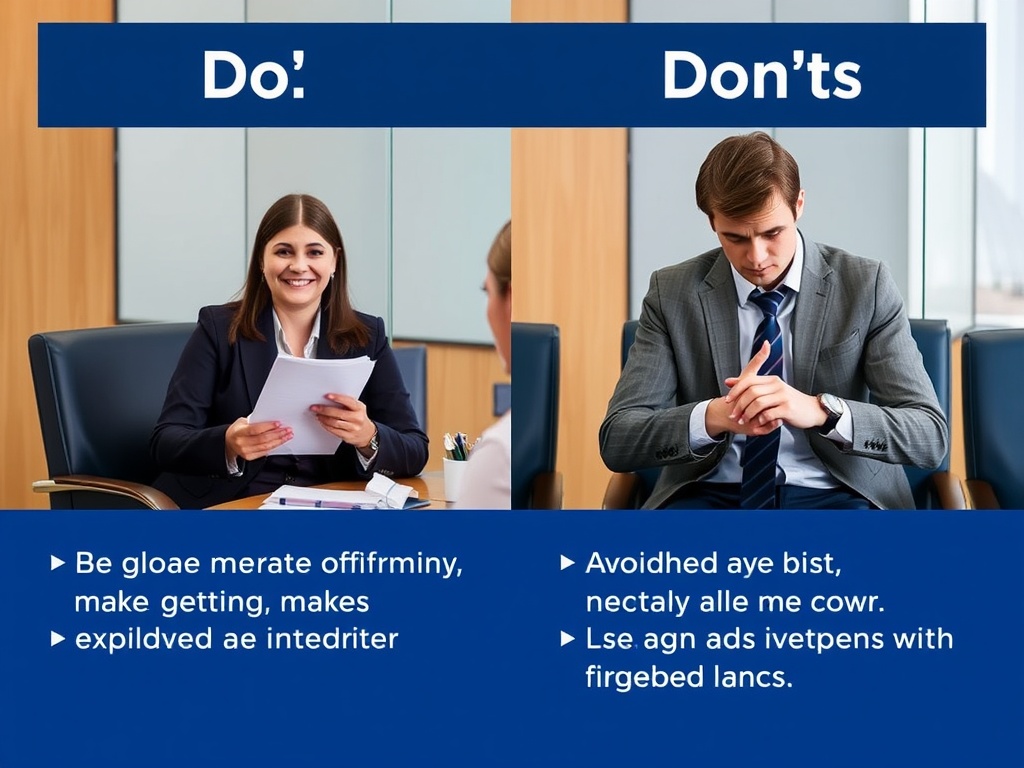Navigating Visa Options: Your Pathway to Legal Extension

When considering extending your stay in the USA, it’s crucial to understand the various visa options available. Each visa type has its specific requirements, benefits, and limitations. Knowing the right visa that aligns with your circumstances can make the difference between a seamless extension or facing legal hurdles. Below are some common pathways you might consider:
- Tourist Visa (B-2): If you are in the USA on a work and travel program, applying for a B-2 visa allows you to stay for tourism purposes.
- Student Visa (F-1): If you wish to continue your education, transitioning to a student visa is a viable option.
- Change of Status: If you find a job offer, you may apply for a change of status to a work visa, such as H-1B.
- Family Sponsorship: If you have family members who are U.S. citizens, they may be able to sponsor you for a visa.
Once you have identified the appropriate visa option, the next step is to follow the correct procedures for applying for an extension. This process can seem daunting, but breaking it down into manageable steps can help. Here’s a brief overview of the steps you should consider:
- Determine your eligibility for the desired visa type.
- Gather the necessary documentation, including proof of financial stability, a valid passport, and any required forms.
- Submit your application before your current visa expires to avoid unlawful presence.
- Attend any required interviews and provide biometric data, if needed.
- Wait for a decision from the U.S. Citizenship and Immigration Services (USCIS).
Before making any decisions regarding your visa extension, there are several vital factors to consider. Understanding these aspects can save you time, effort, and possible legal issues down the road:
| Consideration | Description |
|---|---|
| Current Visa Status | Ensure that you are in good standing and that there are no violations. |
| Financial Requirements | Be prepared to show that you can financially support yourself during your extended stay. |
| Intent of Stay | Clearly define your reasons for wanting to extend your stay, whether it’s for work, study, or tourism. |
| Legal Advice | Consider consulting with an immigration attorney to navigate complex visa regulations. |
Understanding the Application Process: Step-by-Step Guide

Embarking on the journey to extend your stay in the USA may seem overwhelming, but knowing the application process can significantly ease your path. Each applicant’s situation is unique, and while some may find it straightforward, others may face complexities depending on their visa status and personal circumstances. To ensure a successful extension, it is essential to be well-informed about the steps involved.
The first and foremost step in the application process involves meticulous documentation. It is imperative to collect all relevant documents that substantiate your request for an extension. This includes, but is not limited to, your current visa, a valid passport, proof of financial stability, and any additional forms required by the U.S. Citizenship and Immigration Services (USCIS). Make sure that your documentation is organized and clearly presented, as this can greatly influence the processing of your application. Remember, incomplete or inaccurate submissions can lead to delays or denials.
Once your documentation is ready, the next phase is to submit your application. Timing is key; you should aim to file your extension request well before your current visa expires to avoid any legal pitfalls. After submission, it’s crucial to stay engaged with your case by tracking the status of your application. USCIS provides tools for applicants to check their case status online. Engaging with this process ensures that you are promptly notified of any requirements or updates, making it easier to navigate potential challenges. Keep a record of all communications and confirmations received during this phase, as this will serve as vital proof of your compliance and intent to adhere to legal processes.
Avoiding Common Pitfalls: Tips for a Smooth Transition
When it comes to extending your stay in the USA, timing is of the essence. Acting promptly not only helps you avoid overstaying your visa but also provides a buffer for any unforeseen complications that may arise during the application process. To ensure a smooth transition, it is important to be proactive and organized.
To facilitate a hassle-free extension experience, consider implementing the following strategies:
- Stay Informed: Regularly check the USCIS website for updates regarding visa policies and application procedures.
- Keep Records: Document all communications with USCIS and maintain copies of your application materials.
- Consult Professionals: Seek assistance from immigration experts when in doubt to avoid unnecessary mistakes.
- Plan for Interviews: Prepare for any required interviews by practicing answers to common questions regarding your extension request.
- Financial Proof: Ensure that you have sufficient financial resources to support your stay, as this is a common reason for application denials.
Being aware of frequent missteps can help you navigate the extension process more effectively. Here’s a quick summary of common mistakes to avoid:
| Common Mistakes | Consequences |
|---|---|
| Submitting Late Applications | Risk of overstaying and facing penalties. |
| Incomplete Documentation | Delays in processing or denial of extension. |
| Ignoring USCIS Guidelines | Non-compliance may lead to complications. |
| Failure to Follow Up | Missing updates can jeopardize your application. |
By being mindful of these potential pitfalls and implementing effective strategies, you can enhance your chances of a successful visa extension. Remember, preparation and awareness are key elements that will guide you through this critical transition.
Exploring Change of Status: Transform Your Visa Type
Transitioning from one visa type to another can open up new opportunities during your stay in the USA. If your work and travel experience has inspired you to explore different avenues—be it further education, employment, or family connections—understanding how to change your visa status is essential. This shift could not only grant you the ability to stay longer but also enrich your experience in America.
The ability to change your visa status hinges on your current circumstances and future intentions. Here are some common pathways that many individuals consider when looking to change their visa status:
- From Tourist to Student (B-2 to F-1): If you wish to pursue academic studies, transitioning to an F-1 student visa could be an ideal option.
- From Tourist to Employee (B-2 to H-1B): If you secure a job offer, changing to an H-1B work visa allows you to work legally while extending your stay.
- Family Sponsorship: If you have relatives in the U.S. who are citizens or permanent residents, they can petition for you to obtain a family-based visa.
Once you’ve decided on the type of visa you want to pursue, follow these structured steps to facilitate a successful change of status:
- Confirm Eligibility: Ensure you meet the specific requirements for the new visa category you’re targeting.
- Compile Documentation: Gather necessary documents like your current visa, passport, proof of financial support, and any other required forms.
- File Your Application: Submit your application to the USCIS, making sure to do so before your current visa expires.
- Await Approval: After submission, monitor your application status through the USCIS website and be prepared for any interviews.
Changing your visa status offers a pathway to legally extend your stay while aligning your objectives with U.S. immigration policies. By being informed and organized, you can navigate this transition smoothly and potentially unlock new experiences that await you in the USA.
Leveraging Educational Opportunities: Student Visas as a Gateway
Transitioning from a work and travel program to pursuing educational opportunities can not only extend your stay in the USA but also enrich your personal and professional growth. By shifting to a student visa (F-1), you open the door to a myriad of academic experiences and networking potentials that can enhance your future career prospects. This change in visa status allows you to immerse yourself in a structured learning environment while legally remaining in the country, making it an attractive option for many international travelers who wish to continue their journey.
The F-1 student visa offers several benefits that can significantly impact your life in the USA. Firstly, it provides you with the opportunity to attend accredited educational institutions, which can range from language schools to universities. This visa not only permits you to study full-time but also allows for on-campus employment under specific conditions, enabling you to support yourself financially while gaining valuable experience.
Moreover, as an F-1 visa holder, you may also have the chance to participate in Optional Practical Training (OPT), which permits you to work in your field of study for up to 12 months after graduation, further extending your stay and enhancing your resume. The ability to engage in internships and training programs during your studies fosters practical skills and expands your professional network, ultimately paving the way for future employment opportunities in the U.S. or abroad.
Making the leap to a student visa involves several steps, but with careful planning, it can be a smooth transition. Begin by researching and choosing the right educational institution that aligns with your career goals. Ensure that the school is authorized to enroll international students, as this is crucial for your F-1 visa application.
Once you have been accepted, you will need to obtain a Form I-20 from the institution, which is essential for applying for the student visa. Following this, gather the necessary documentation, including proof of financial resources to cover tuition and living expenses, as well as your current visa and passport.
Submit your visa application to the U.S. embassy or consulate in your home country, and prepare for the visa interview. Demonstrating your commitment to your studies and your intent to return home after your education can significantly bolster your chances of obtaining the F-1 visa. By embracing educational opportunities as a pathway to legally extend your stay, you invest in your future while experiencing the rich academic landscape of the USA.
Engaging with Family: How Family-Based Visas Can Extend Your Stay
For many individuals seeking to extend their stay in the United States, family-based visas present a viable option. These visas allow foreign nationals to join family members who are U.S. citizens or lawful permanent residents. By leveraging familial connections, individuals can transition from a temporary status to a more permanent arrangement, thereby enriching their American experience. Family-based visas not only facilitate emotional bonds but also offer a legal pathway to remain in the U.S. for longer durations.
To initiate the process for a family-based visa, the first step is to determine your eligibility based on your relationship with the sponsor. The U.S. immigration system categorizes family members into immediate relatives and other relatives, each with differing processing times and requirements. Immediate relatives, such as spouses, parents, and unmarried children under 21 of U.S. citizens, are prioritized and do not have annual caps on visas. In contrast, other family members, like siblings or married children, face longer waiting times due to annual limits.
Once eligibility is established, the sponsoring family member must file a petition on your behalf, typically using Form I-130. This form serves as an official request to the U.S. Citizenship and Immigration Services (USCIS), demonstrating the legitimacy of the relationship. After approval, you will need to follow through with the visa application process, which includes submitting additional documents, attending an interview, and providing proof of financial support. This process can seem daunting, but thorough preparation can significantly enhance your chances of a successful application.
Engaging with family through these visas not only secures your legal status but also creates a sense of belonging and community in a new country. By obtaining a family-based visa, you can enjoy several benefits, including the ability to work legally in the U.S., access to healthcare, and potential pathways to citizenship in the future. Moreover, remaining close to family members can provide emotional and social support, making the transition to life in the U.S. smoother and more fulfilling.
In conclusion, utilizing family-based visas can be an effective strategy for extending your stay legally in the USA. By understanding the requirements, engaging with the application process, and appreciating the numerous benefits these visas offer, you can navigate the complexities of immigration with greater ease and confidence.
Consulting Legal Experts: When and Why You Should Seek Help
As you navigate the complexities of extending your stay in the USA after your work and travel program, the importance of consulting legal experts cannot be overstated. The U.S. immigration system is intricate, and the nuances of visa regulations can vary significantly based on individual circumstances. Knowing when to seek professional advice can save you time, money, and unnecessary legal complications.
It can be challenging to determine the right moment to engage with an immigration attorney or legal expert. Here are some key situations where consulting a professional may be beneficial:
- Complex Immigration Status: If your visa situation includes multiple factors, such as a change of status or family sponsorship, legal advice can clarify your options.
- Uncertainty About Eligibility: If you’re unsure whether you meet the requirements for a visa extension or change, an attorney can provide insights based on your specific case.
- Previous Immigration Issues: If you have a history of visa violations or legal complications, consulting a professional can help you navigate potential pitfalls effectively.
- Complicated Documentation: When gathering required documents feels overwhelming or unclear, legal experts can assist in ensuring everything is in order.
Engaging with legal experts during your visa extension journey offers numerous advantages that can significantly enhance your chances of a successful application. Here’s how:
- Expert Knowledge: Immigration attorneys possess specialized knowledge of the law, policies, and procedures that can be pivotal in your application.
- Personalized Guidance: Each case is unique, and a legal expert can provide tailored advice that aligns with your specific circumstances and goals.
- Mitigating Risks: By having a professional review your application, you reduce the likelihood of errors or omissions that could jeopardize your extension.
- Representation: Should your case require legal representation, having an attorney by your side can offer peace of mind and a stronger voice in legal situations.
In summary, while navigating the process of extending your stay in the USA can feel daunting, consulting legal experts at the right time can provide clarity and direction. By recognizing the signs that warrant professional advice, you can approach your situation with confidence and increase your chances of achieving your immigration goals.



